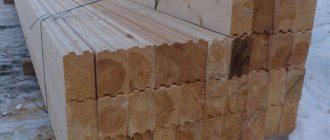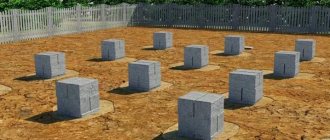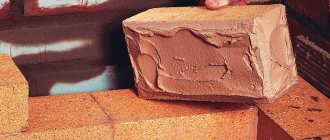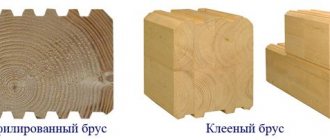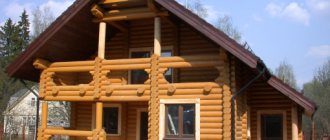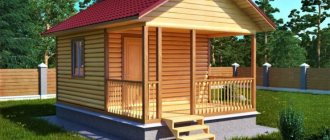Building a bathhouse or sauna for your private home or country house is the dream of many owners of such properties. Ready-made solutions offered on the market very rarely satisfy the needs of the domestic buyer. There is always the opportunity to build your own room system and choose a stove for a bath that will provide a comfortable temperature and ease of use. If everything is done correctly, you can get an excellent steam room for a pleasant and healthy vacation.
The importance of careful calculations
Regardless of what type of stove is installed in the bathhouse, double-circuit wood-burning, electric, metal or brick, you need to correctly calculate its parameters. It is worth giving clear examples of the importance of the characteristics of a heating unit.
- If you choose the wrong stove for a sauna by volume, it will be impossible to achieve ideal steam. If the installation power is insufficient, it is simply impossible to warm up the room.
- An equally unpleasant situation is when the design of a sauna stove deliberately overestimates its power. The steam room will constantly overheat. Therefore, we will have to ventilate it and make visits shorter.
- If you choose too large a furnace volume and quantity of stone for a wood-burning sauna, it will be impossible to obtain stable steam. Without ventilation, the room will become extremely hot. And if you achieve relative comfort by opening the doors and reducing the entry time, you will have to put up with changes in the temperature of the steam, both at the floor and on the top shelf.
There are other difficulties caused by incorrect calculations. In particular, certain algorithms for determining the mass of stones can force the owner of a bathhouse to build powerful supports - scales, the task of which is to withstand significant loads. Therefore, the calculation of the power of a sauna stove must be done carefully, taking into account the nature of the steam room: Russian bath or Finnish sauna.
conclusions
So, which stove to choose for a bath? This issue can be resolved in several steps.
- Determine the required power based on the volume of the steam room and its thermal insulation. Study information about different models: the characteristics may indicate not the power, but the recommended volume of the steam room.
- Determine the maximum permissible dimensions of the stove, taking into account the size of the steam room, its layout and ease of use.
- Determine the amount of space for laying stones. Here you should use the recommendations for calculating the required mass of backfill and choose a model that can accommodate no less.
With all the variety of options for sauna stoves, you can make the right choice if you follow these recommendations. If you have any doubts, you can always contact qualified managers of the Teplodar online store.
Calculations for a Russian bath
A Russian bath always involves the use of a large amount of hot steam. In this mode, it is important to take into account each of the factors of circulation and conversion of thermal energy. In the bathhouse, it is necessary to ensure uniform heating conditions, both at floor level and on the upper shelves.
Calculating the power of a stove for a Russian bath takes into account not only the basic energy output for heating the volume of the room, but also the heat loss factors existing in the steam room . To determine the required heating device performance, you must:
- Calculate the total volume of the steam room. To determine it for a room with a rectangular floor, just multiply the width, height, and length of the room. If the steam room has a complex shape, its volume must be divided into separate parallelepipeds and their indicators must be summed up.
- If the room has brick walls, you need to take into account the additional power to heat this heat-intensive material. To do this, calculate the area of the masonry and take an additional volume of cubic meter for each square meter. m.
Then the complex processes of calculating heat loss begin. For single glass windows, you need to add 3 cubic meters to the total heating volume for every square meter of its area. In the case of double glazing, this figure is 1.5 cubic meters per square. Next, the increase in heating volume for doors is calculated. To do this, add 1.2 cubes per square of their area.
The next step is an adjustment for general insulation. If the bathhouse was built according to the basic recommendations, with mandatory waterproofing of the walls and gluing of finishing joints, there is no need to make changes to the already calculated volume for heating. In the case where a simple room without special insulation is allocated for a steam room, you should add 20 to 30% to the final cubic footage.
The last tolerance takes into account the nature of the heating. If the stove is located in an adjacent room, it is required to add another 10% to the final figure of the calculated volume. The resulting value is the minimum acceptable indicator.
Advice! In general, calculating the power of a sauna stove is very simple. It is enough to assume that heating one cubic meter of volume requires 1 kW of thermal energy. This is true for a Russian-style bathhouse.
Main characteristics of sauna stoves
The main criterion when choosing a stove for a sauna is power. If there is a lack of it, the room will heat up for a long time and cool down quickly, and the equipment will fail in a short time due to constant overloads.
If the power is higher than necessary, then the temperature in the steam room will rise quickly, but the stones will not warm up, and it will not be possible to obtain balanced steam.
Therefore, when choosing a heating device, you need to decide in advance on its size.
Power is not the only criterion when choosing a sauna stove. There are many more factors that influence the dimensions. These include the following:
- iron or brick stove;
- Type of fuel;
- firebox design;
- room layout and finishing options;
- what kind of heating is used: cold or hot;
- heater type: closed or open;
- Duration of operation on one load of fuel.
Only the combination of all these parameters will allow us to correctly determine the real size of the structure.
Its dimensions depend on the power of the heating structure. The higher this indicator, the more fuel needs to be burned, therefore, the volume of the firebox must also be appropriate. When calculating power, the volume of the room is taken into account. What influences its heating? First of all, this is the ambient temperature and the quality of the thermal insulation of the walls.
First, calculate the volume of the room. To do this, multiply its length, width and height. We divide the resulting value by two and obtain the conditional number of kilowatts required for heating.
In addition, it is necessary to heat the stones for the steam room and water for washing. In this case, part of the heat will fly out into the pipe. Therefore, the estimated number of kilowatts should be multiplied by 2.5-3. This is a calculation option for the case if the walls of the steam room are insulated and it is not combined with a washing room.
note
If the log house is bare and there is no thermal insulation, then we multiply the resulting value by another 1.5.
Now you can calculate the volume of the firebox in liters. To do this, the power must be divided by 0.5 or 0.6. To find out its linear dimensions, you need to take the cube root of the obtained value. After the calculations have been made, it is not difficult to imagine the dimensions of the heating unit itself.
For optimal air heating, the sauna stove parameters should be as follows:
- the ratio of the size of the firebox to the area of the heated room is 1:50 or 1:70;
- combustion hole depth - 1:2 or 2:3;
- The volume of the firebox to the chimney cross-section should be in a ratio of 1:10.
The most common sizes of sauna stoves:
- Power 16 kW, firebox size 55x55 cm. They are used in rooms with a volume of 20–22 m³. The height of the heating unit is from 89 to 143 cm. The capacity of the heater is from 60 to 150 kg of stones. Such a stove, with the same power, can produce more steam.
- Power up to 28 kW, combustion hole size 63x63 cm. With similar firebox volumes, heating a steam room with a volume of up to 35 m³ will take an hour and a half. Furnace height from 98 to 158 cm with stone loading from 70 to 170 kg.
- Power 40 kW, firebox size 73x73 cm, heater capacity - 250 kg. Capable of heating rooms up to 50 m³. This unit allows you to steam for six hours without additional fuel loading.
The range of metal heating units for baths on the modern market is large. Usually these are steel or cast iron structures, which can be wood, gas, or electric. When buying a ready-made stove, you do not need to make any calculations. The manufacturer did this for you. The passport indicates the power of the device, dimensions and recommended room volume.
For a Russian bath, depending on the model, the dimensions vary: length from 400 to 680 cm, depth from 415 to 900 cm and height from 700 to 1600 cm.
Brick structures are more diverse in terms of volume and design. What needs to be remembered when laying such a stove is the standard size of the red brick, which has dimensions (250 x 120 x 65 mm). The base is usually laid out in 3.5 by 4 bricks (89 x 102 cm) or 4 x 5 bricks (102 x 129 cm).
Most often, the water tank is installed directly into the stove.
There are several key factors to take into account.
- The most important thing is that the dimensions of the heating unit correspond to the size of the room. For a small steam room, you should give preference to a compact model, this will protect you from contact with a hot surface and protect you from burns.
- The design must be thought out in advance to make it easier to work with heating elements and to be able to regulate the temperature.
- The power should be sufficient to heat the room well and generate steam.
- To exclude the possibility of spontaneous combustion, it is imperative to comply with all fire safety rules regulated by SNiP 41-01-01.
The dimensions of the sauna stove are an important aspect that you should pay attention to. Take a responsible approach to the manufacture of this element, and your bathhouse will become a place of better relaxation.
The performance of a modern sauna stove is calculated based on the size of the steam room and the building parameters. To do this, they operate with the cubic capacity of the heated room, taking into account a number of additional factors that have a direct impact on the heat-saving capabilities of the steam room.
The hot heart of the bathhouse
By multiplying the height, width and length of the room, you can only get a certain starting point for further calculations, which is the minimum performance of the heating unit.
In fact, there are a number of other parameters that change power requirements.
It is necessary to add into the calculation heat loss from conditionally cold surfaces, such as a glass door, window, brickwork, stone or tile cladding, and so on).
If the steam room has a window, you need to add 3 m3 for each square meter of window area in the case of single glazing and 1.5 m3 in the case of double glazing. Using the same scheme, we add 1.2 m3 for each m2 of glass door. The coefficient here is smaller, since behind the door there is a warm room, and not the street.
We suggest you familiarize yourself with: Insulation for a bath with foil Isover (Izover) sauna
A brick partition is equivalent to an increase of 1.2 m3 of steam room volume for each square of its area. The high heat capacity of brick requires additional heating. The same is done with the stone-lined surface inside the steam room.
Obviously, such a calculation will not be entirely correct if the material from which the bathhouse is built is not taken into account at all. Therefore, we will try to provide for this factor.
If the walls are made of logs without interior finishing (the walls are not lined with clapboard through thermal insulation), the volume of the steam room must be multiplied by 1.5 for a wall thickness of 100-140 mm and by 1.75 for a log thickness of 200-240 mm.
There is no mistake here; increasing the thickness of simple log walls requires power. This is due to the high heat capacity of wood - more heat will be needed to warm it up. If the steam room has good thermal insulation, its walls are covered with clapboard with insulation and vapor barrier with foil, a reduction factor is taken for the “framework”, which is equal to 0.6-0.7.
When the stove is fired from an adjacent room, the required productivity must be increased by at least 10-15%. The chimney of a sauna stove, or more precisely, its location, can play some role in increasing power. If a significant part of it is located in the steam room, it can also become a source of additional heat.
Advice
Since in a Russian bath, steam is formed as a result of splashing water on hot stones, when choosing a sauna stove, the volume (weight) of stones that can be placed in this stove is indicated. However, this does not mean that stones need to be loaded to the maximum. For 1 m3 of steam room, no more than 1.5 kg of stones are usually required.
According to the calculation results, sometimes a fairly significant increase is obtained. But for a bathhouse it is worth choosing a wood-burning stove with a higher power rather than a smaller one: it is better to stifle the combustion than not to heat the steam room to the required temperature.
This supply is especially important in winter, when the bathhouse freezes through. When putting it into hover mode, the reserves that seem unnecessary in the summer will come in handy. Having some reserve will allow you not to heat the oven to the limit. In addition, it will allow the heater to warm up faster and better, which will ultimately provide more comfortable bath conditions. There are also disadvantages. This is the price and size.
The method for calculating the power of a sauna stove is similar. To warm up one cubic meter of steam room to the required parameters, on average, a thermal power of about 1 kW is required. If there is constant heating (sauna in the house), a reduction factor of 0.7 is used.
Unlike a wood-burning stove, the power of an electric sauna heater should be close to optimal, no more and no less. A high wattage oven will heat up faster and then shut down. The result will be hot air on cold stones, on which it is useless to pour water - they will not produce steam.
You can't save money on a low-power stove either. Working in extreme conditions, it will not be able to provide an acceptable heating rate (heating time will increase, and with it energy consumption), and due to regular overload it will quickly fail.
Calculation example
For a small steam room measuring 2.5*2.5*2.2 meters, we get a stove with a minimum capacity of 13.75 m3. A single glazed window measuring 0.4*0.4 m will add 0.48 m3.
A stove with a firebox opening into the vestibule will add 10%, that is, another 1.4 m3. A brick partition of 1.2 * 1.5 m will take away heat equivalent to 2.16 m3.
Let the door be wooden, but not particularly insulated and with a glass window measuring 0.8 * 1.5 m. Therefore, we will add another 1.44 m3 to it.
note
If the steam room is insulated according to all the rules (that is, on the walls there is a layer of basalt insulation, which is covered with foil as a heat-reflecting and vapor barrier, the joints are carefully taped, there is a double layer of insulation on the ceiling and all this is covered with clapboard), we reduce the available volume of the steam room by a correction factor, which just in case, let it be 0.7.
Thus, instead of 13.75 m3, we get the original figure of 9.63 m3. As a result, the estimated required power of the sauna stove will be: 9.63 0.48 1.4 2.16 1.44 = 15.11 m3. Quite an acceptable value. For a wood-burning stove, taking into account better heating of the heater, you can choose a stove with a capacity of 20 m3 (that is, approximately 15-25 m3 indicated in the manufacturer’s passport).
Calculation for sauna
A classic sauna does not imply the generation of a large amount of water vapor in the steam room. This is the so-called dry heat. This is why the Finnish sauna is so popular among consumers. Solutions for its organization can be found in a huge range on the mass market.
Important! A classic sauna can be arranged even within an apartment. At the same time, there will be no need for special insulation and waterproofing in the room.
A small amount of water vapor can be generated for personal enjoyment. That is why even ready-made electric stoves for Finnish saunas are equipped with stones. However, this thermal energy conversion process may be considered insignificant and ignored.
What kind of stove to put in a sauna-type bathhouse, where you don’t need a large amount of steam, volume for people to move and wave brooms, is decided by its owner. You can go the hard way. In this case, the calculation is made according to the above algorithm.
A simpler method involves operating with average heat generation indicators. Today there are quite a lot of ready-made solutions on the market in the form of stoves for Finnish saunas. They can be wood-burning or electric. The manufacturer indicates either the optimal volume of the steam room or the power consumed by the heating elements. The average statistical figures for thermal generation requirements for different types of buildings look like this:
- walls made of wood (profiled, laminated timber, rounded logs) for a thickness of up to 140 mm - 1.5 kW per cubic meter of volume;
- for walls made of wood with a thickness of more than 140 mm - 1.75 kW per cubic meter;
- in buildings built using frame technology, including SIP panels - from 600 to 800 W per cubic meter.
Advice! These figures are correct for wooden walls that have not been insulated. If the owner of the bathhouse acted prudently and made a special finish, the standards for heating can be taken at a level corresponding to the frame construction technology.
For a sauna installed inside a house or apartment with existing central heating, there are other recommendations. In this case, electric units are usually used. Their power must be selected at the rate of 700 W per cubic meter of steam room volume.
Washing
Now that we have more or less figured out what size a steam room should be in a bathhouse, let’s move on to the washing room. There, as you know, they traditionally wash from basins, and, if possible, run hot water and wash in the shower - on a tray or in a shower stall.
Sources of hot water can be either external - a water supply network, or internal - water heated by a stove. For the latter, heat exchangers and tanks in contact with the furnace on one side are used. So, the tank also takes up space.
If it is installed on a stove, it takes up space in the steam room; if it is installed in a soap room, and is heated using a heat exchanger, then, accordingly, at the installation site. It is also possible to install it in the dressing room.
BY THE WAY! Wherever the tank is located, heating it will raise the temperature in that room, so it can be thought of as a radiator or heater.
Therefore, it is more advisable, of course, to put it in the washing room. But here there are possible options depending on expediency, look at your specifics.
So, to wash while sitting from a nearby basin, you need a bench. Long enough to fit a basin. The best thing is one bench per person. You still need a place for pouring. And for some - under the font.
And if you have a shower, then benches are no longer essential, except for all sorts of procedures. You can also install a shower from the tank - raise it higher or use forced pressure.
Optimal washing
When you have completely decided on what exactly you want to see in your soap bar, including the water supply system, then you can start drawing a plan.
Let's assume that the basins are still in use. Then make benches for two people and enter their dimensions into the plan. It’s comfortable to sit with a seat depth of 40 cm, but it’s also possible, for example, 30 cm. One person occupies roughly 60 cm. Plus a basin. A meter bench should be enough.
But you can connect two benches if necessary to make one sunbed, then one bench should be at least 180 cm in length.
Pallets come in different sizes - from 80x80 to 140x80 (in fact, there are many variations, you can always choose a pallet to suit your ideas about a comfortable shower). If you are planning a shower, enter the area of the tray.
The size of the steam room and washing room in the bathhouse will vary greatly depending on their contents - some have a soap room and a sink, others also have a combined bathroom. We repeat: Optima is your own plan of what you want. Arrange the objects so that it is convenient - the parameters of the room will immediately become visible.
Of course, we will not be unfounded and will give as an example a new drawing of a bathhouse, with rather modest but successful dimensions of a steam room and a washing room.
Rest room, washing room and steam room: dimensions and layout.
Please note that the tank can be mounted high, so it is quite possible to place a bench under it. The size of the pair, by the way, is quite decent - 230x200 cm.
Afterburner reserve
Experienced builders of baths and saunas recommend increasing the final power of the stove by 10-15% of the calculated one. The idea of such an action is very simple. Firstly, the ease of use of the oven is improved. It does not need to be heated to the limit and constantly monitor the amount of fuel or temperature. The unit will not operate at peak power levels, allowing a certain range of adjustment.
Secondly, for bathhouses that are not constantly visited, it becomes possible to quickly warm up with afterburner. This is especially important for buildings in suburban areas. For such a bathhouse, which in winter can literally freeze through and through, you can accept a tolerance of 20%. This will allow you to quickly prepare the room and quickly start taking thermal procedures.
These figures are correct for wood-burning stoves. If an electric unit is used, a power reserve is always made. This may be a tolerance of 10-15% to neutralize possible voltage surges and different heat transfer modes. If there is a need for accelerated heating of the room, it is recommended to select the power of an electric furnace (especially a home-made one) 20-25% higher than the calculated one.
Useful video
Konstantin Bely about the height of ceilings (categorically, as always?)
But this video simply talks about the structure of a Russian steam room, but it tells it so kindly that we just couldn’t resist bringing it to your attention?
Let's summarize some results. You will do a great job planning your own steam room if you calculate the “spot” of the stove (its area and the empty space around it) with the shelves according to our ergonomic formulas, and if in doubt, measure the width and height of your household and put their dimensions in the drawing.
How to calculate the volume of the firebox
Calculating a stove for a sauna, which you plan to make yourself with power from the mains, is quite simple. It is necessary to obtain the final power requirements and then calculate the required number of heating elements based on their characteristics and wiring capabilities.
However, bathhouse owners often have difficulty determining the parameters of wood-burning stoves. There is nothing complicated here either. It is enough to calculate the volume of the firebox, the compartment where the fuel will burn. The calculation formula is simple:
- the volume is calculated by dividing the required power by 0.6 for a stove installed directly in the steam room;
- The combustion volume of the firebox is equal to twice the calculated power if the stove is located in an adjacent room.
The resulting figure is measured in liters. To roughly estimate the dimensions of the firebox, you need to take the cube root from it and divide the result by 1000. This way you can get the value in linear meters. However, this is a rough estimate. It will show the side of the cube without taking into account how the geometry of the firebox fits into the existing room.
Steam room height
The height of the ceiling in the steam room largely depends on the preferences of the future owner. Any steam room requires a structure for bath procedures, called a shelf. If a person prefers to sit, then to determine the ceiling height it is enough to add 1 m to the level of the top shelf.
If you plan to use brooms, add 1.5 m to the height of the top shelf. In any case, the minimum ceiling height in the steam room should be 2 m.
How to calculate stones
It is important to calculate the amount of stone that is placed on the stove, first of all, for a Russian bath . It is the energy accumulated by the cobblestones that will be used to generate hot water vapor.
Important! Owners of homemade bathhouses face the greatest difficulties in calculating the number of cobblestones. If you choose an excessive volume of stone, it will take a long time to warm up and create a load on the furnace elements. If there are few stones, it is almost impossible to create comfortable conditions for relaxation in the steam room.
According to some calculation algorithms, for 5 bathhouse users it will be necessary to load as much as 250 kg of cobblestones. This figure is unacceptable for most owners of homemade steam rooms. Therefore, you should use very old advice. It reads:
- for 6 liters of evaporated liquid you need to choose 8 kg of stone;
- for every cubic meter of steam room (taking into account losses on windows, doors, bricks), an additional 1.5 kg of cobblestone is added.
According to the average statistical estimate, one person spends from 0.5 to 0.8 liters of water per hour in a steam room. Thus, for a steam room for 5 visitors, you will need to evaporate 4 liters of liquid every hour. Even if you expect the room to be used continuously for 4-6 hours, the total requirements for the amount of water should be reduced by a third, since the steam room will be ventilated and its visitors will take breaks.
As a result, it turns out that it is reasonable to expect the stones in the bathhouse to evaporate about 19 liters of water. This is approximately 40 kg of cobblestone. By adding the required mass to the volume of the room, you can get a fairly acceptable amount of stone that can easily fit in any bathhouse.
Furnace design
Choosing a stove for a bath involves selecting the most suitable design, and there are many more options here than when determining the required power.
Material
Most newly built baths are not intended for a large number of people, and their steam rooms have a small area. In such a steam room, the large dimensions of the stove become a hindrance. Therefore, a compact metal stove is a rational choice.
Another advantage of such a stove is its ease of installation. It does not require a massive foundation or complex work. It is simply placed on a solid platform and connected to the chimney and to the water supply system, if it has a water heater.
Metal stoves are made of sheet steel. Sheets of the greatest thickness, up to 5 mm, are used to make the firebox. The outer casing is painted with high-temperature paint, and in some models, stainless steel containing 17% chromium is used as a manufacturing material.
Steel conducts heat much better than brick, and therefore a metal stove has high heat transfer. Such stoves heat up quickly and cool down faster than, for example, cast iron stoves, which reduces the risk of fire hazards. To accumulate heat and stabilize heating, stone backfill is used. The greater the mass of stones heated from the furnace, the less the intensity of heat transfer changes during temperature changes.
A large heat reserve allows you to produce a large amount of steam. At the same time, its high quality is consistently ensured, since the temperature of the stones when sprayed with water changes little due to their large mass.
Most of these stoves can be fired from the room adjacent to the steam room. The firebox door is located at a considerable distance from the body and is connected to the stove by a neck - a fuel channel. Thus, it is possible to maintain cleanliness in the steam room - all waste from the fuel remains in the dressing room.
Safety
The metal of the oven heats up to a high temperature, which can pose a danger to people. To avoid burns, such a heater is equipped with a protective casing, like this model. In some cases, the protective fence is not a casing, but a stone backfill, as in grid furnaces, for example, “Sibirsky Utes”.
An air gap remains between the firebox and the protective casing, which serves as a heat insulator that reduces the temperature of the outer casing. In this gap, natural draft arises, which can be used to intensively distribute hot air throughout the entire volume of the steam room. To do this, holes are made in the housing for air entry from the bottom and exit from the top, as in models of the Kuzbass series.
We suggest you read: How to remove a pipe in a bathhouse
The through air flow through the air gaps of the housing enhances convection, which allows you to very quickly warm up the air in the steam room, and the backfill of stones stabilizes the heating and provides a reserve of energy for steam formation. Often a device for generating steam is built into the stone backfill. Using this oven design, it is easy to obtain a constant flow of steam.
Calculation of power by stone
Some owners of homemade Russian baths prefer to calculate the power of the furnace from the main factor of steam generation - this is the energy accumulated by the stones. In the process of pouring water, they cool down sharply. The furnace must replenish lost heat at a rate necessary to generate sufficient steam per unit time.
You can calculate a stove for a bath based on the mass parameters of the stone, which will provide comfort for a certain number of visitors. The calculation is made strictly based on an assessment of the required heat transfer.
- The energy that the stones give off when cooling from 500 to 200 degrees Celsius is calculated at the rate of 0.84 kJ per delta temperature drop (on average 300, from 500 to 200) per kilogram of coolant. The resulting value is measured in Joules.
- The rated power that the stove must provide per hour to replenish the heat lost by the stones is determined at the rate of 3600 Joules per 1 kW.
- The parameters of the heating device are recalculated based on the conditions imposed by the mode of use of the bathhouse. For example, if water is supplied to the stones every 15 minutes, the power obtained in the previous paragraph must be increased 4 times (60 minutes divided by 15).
Advice! To the final figure you can add tolerances for windows, brickwork, doors as described in calculating the power of the stove for a Russian bath. In this case, 1 kW per cubic meter of conventional loss volume is assumed.
Steam room dimensions
What should be the comfortable size of a steam room?
Optimal steam room size
The size of the steam room will depend primarily on your personal preferences, and then on the size and design of the shelves. In addition, the size of the bath will be affected by the power of the stove, since sitting too close to it is not very pleasant. The size of the oven is also important. However, if there is a shortage of space, you can use a mineralite screen, which will allow you to be even at a distance of 15-20 cm from the stove and not feel discomfort. And all thanks to the fact that this material does not heat up to more than 100-150 ° C.
But before buying a stove, you should pay attention to the functions that the steam room will perform. If we talk about approximate dimensions, then the ceiling height of the room should be about 2.2-2.4 m. But the width should be calculated depending on the expected number of seats in the steam room. It is better to make it in the form of a rectangle rather than a square.
Simple rural or country baths consist of a steam bath and a dressing room. The stove is usually installed in a steam room, while the dressing room is heated by heat that passes through the adjacent wall when the doors to the steam room are open. Often, another stove is placed in the dressing room for heating, usually a metal one - a “potbelly stove”.
To allow you to steam while lying down, shelves are installed in the steam room. The structure of the shelf should be such that, if desired, one could sit on it. Thus, the ceiling height must ensure comfortable placement of people on the shelf.
More comfortable baths are built in such a way that several people can use them at the same time. Baths for the whole family usually consist of a steam room, a dressing room, that is, a dressing room, and a hallway. The dimensions of the steam room should be such that the room has shelves, retractable benches, a water tank, and a stove. It is necessary that the width of the shelves be at least a meter. The distance from the shelf to the stove is also at least a meter. From the stove to the wall - about 50 cm. There should be free space in the room so that a person can feel comfortable being here. In addition, it is necessary to allocate space for basins and buckets. Several shelves should be placed on the wall to place shampoos, washcloths and other accessories.
Advice from the master!
The optimal calculation is not difficult to carry out. In order to better imagine what dimensions the steam room should have, you can make a drawing on a sheet of paper using a scale. Place the necessary items on the steam room drawing and see how comfortable the room is.
Steam room equipment
If we look at history, we can see that the optimal size of a bathhouse in Ancient Rus' was quite large. After all, back then it was customary to steam in groups of 4 or more people. Old Russian families were very numerous, so the baths were built so that everyone was comfortable. Sometimes it was necessary to light the stove several times. Of course, the size of modern apartments imposes significant restrictions on the installation of large baths. If the company consists of more than 4 people, you can use the steam room at the health complex, where there is plenty of space. To arrange a personal bathhouse, it is better to limit yourself to small dimensions.
The temperature in the steam room must be maintained at a high temperature. Therefore, the distance of the shelf from the stove must be calculated. In a Russian bath, minimal heating is most often sufficient, such that the temperature is comfortable for the body. Staying in a sauna for a person is usually associated with stronger heating.
If you take the minimum size of the steam room, then you need to remember the possible dangers. In a small room, a visitor may overheat. The human body heats up not only from the heat of a red-hot stove, but also from hot air. Therefore, if the bath is too small, a person may even get burns. Excessively large sizes can cause the oven to overheat, causing the air to be too hot. And this cannot be beneficial for human health. The dimensions of the bathhouse must be calculated so that everything is balanced. 4 visitors or 6 are steaming - there should be no excessive overheating or unnecessary heat dissipation.
As for the height of the ceiling, if you raise it by at least ten centimeters, the total volume of the premises immediately increases significantly. And this comes with the cost of an additional portion of fuel. In addition, it will take longer to heat up. Therefore, based on 4 steamers, the most comfortable ceiling height is given.
Advice from the master!
The steam room usually has three curtains. The width of the top shelf is the largest. The height of each canopy should be 30-35 centimeters. Then the dimensions of the shelf for each of the 4 steamers will be ideal.
Of course, each owner calculates the optimal size of the bathhouse individually. But you need to take into account that there should be at least one square meter per person soaring. If the area is 4 square meters, then it is easy to estimate how many people can use such a steam room. Russian bathhouse is an excellent way to improve health. With regular visits, a person becomes more seasoned and gets sick less.
Tank type
In addition, all furnaces can be divided into two groups according to the type of tank: there is a stationary option for installing a tank and a remote one.
In the first case, the tank can be attached to the chimney, so the water will be heated not only from the fire, but also from the heat coming through the chimney. This design is considered convenient and compact, however, it should be noted that filling such a tank is quite difficult.
If we are talking not only about a traditional Russian bath, but also about a sauna, then it is recommended to opt for a remote tank. A container with heated water can be located in any convenient place, eliminating excess moisture from the steam room.
